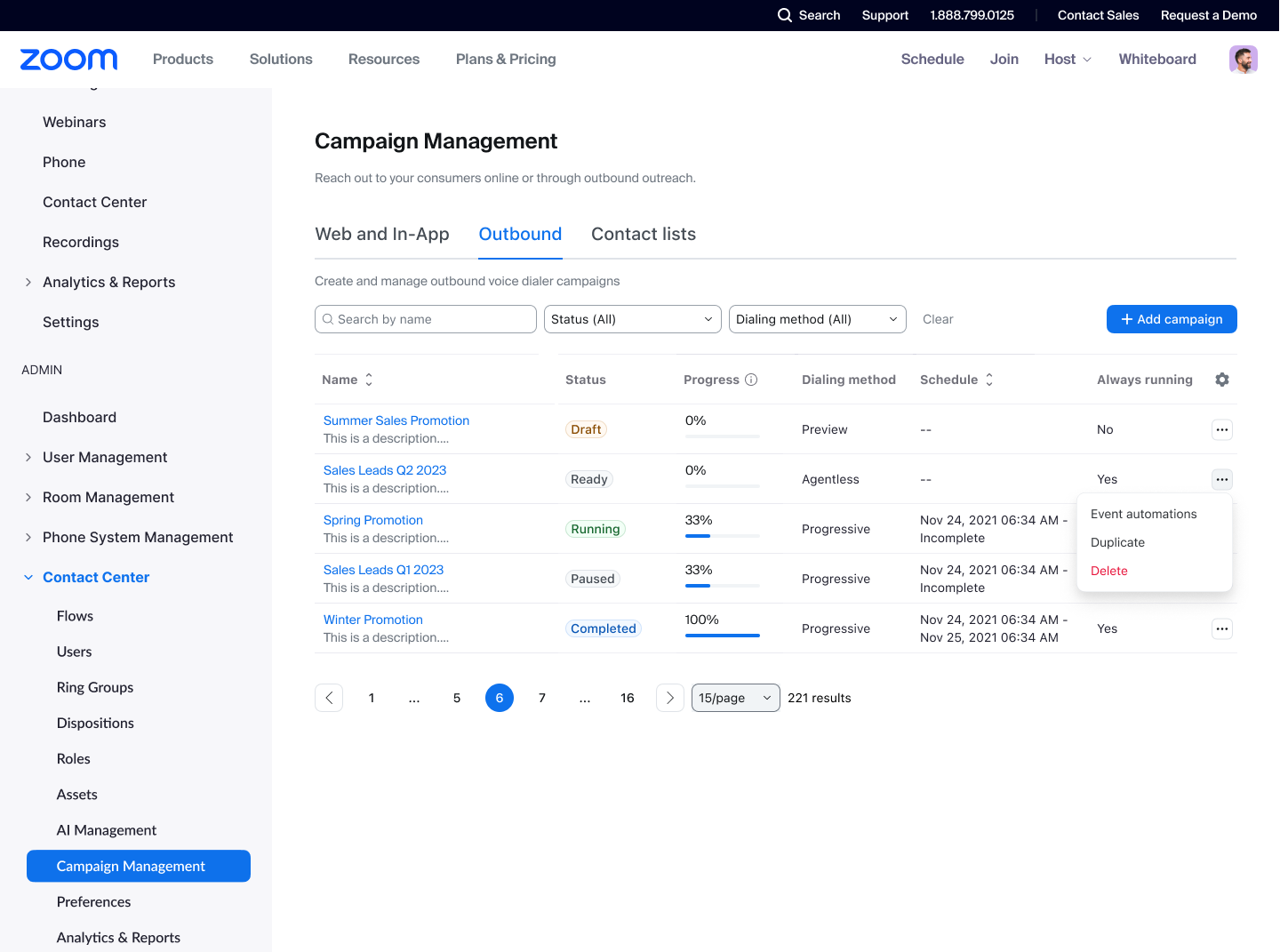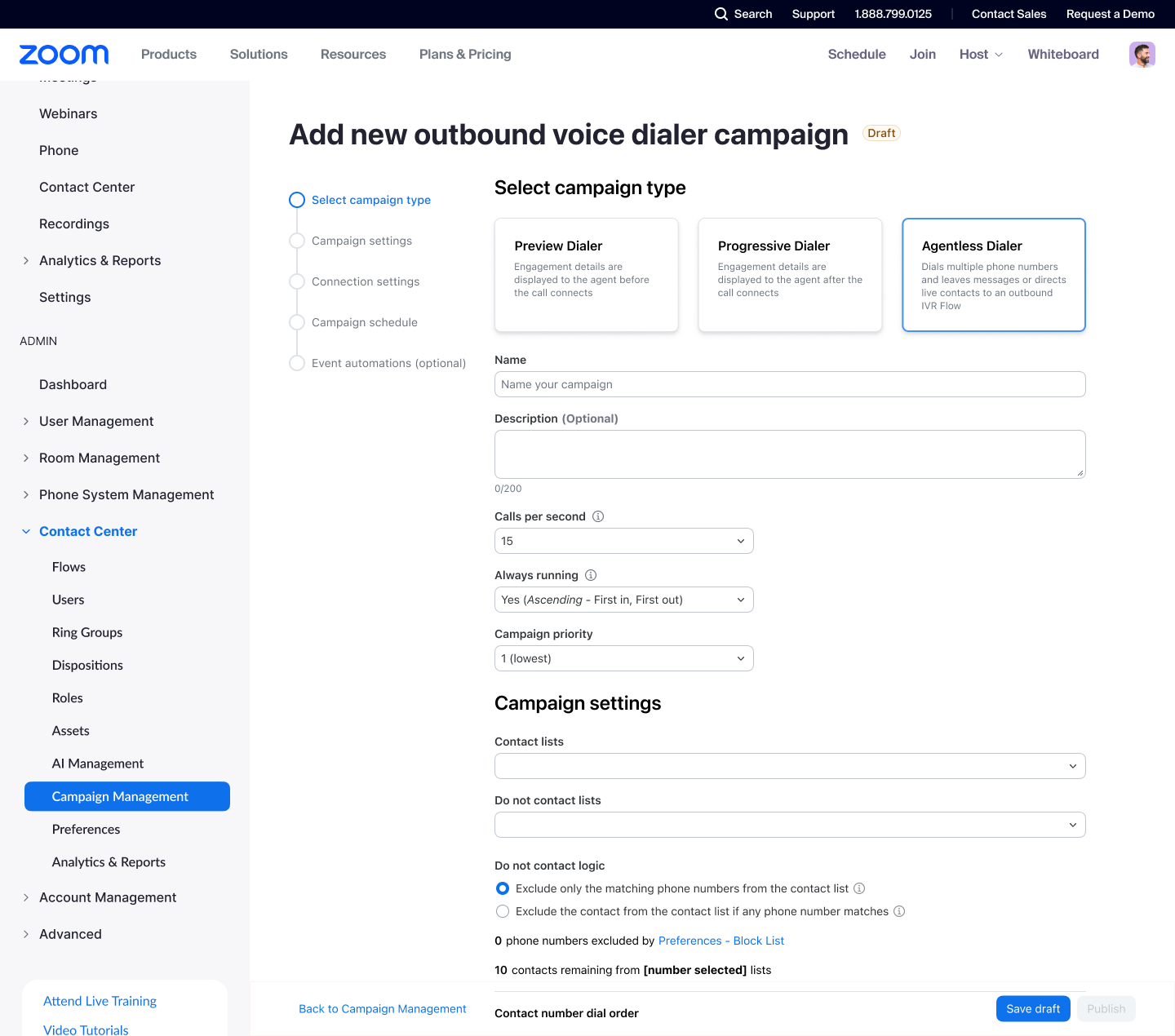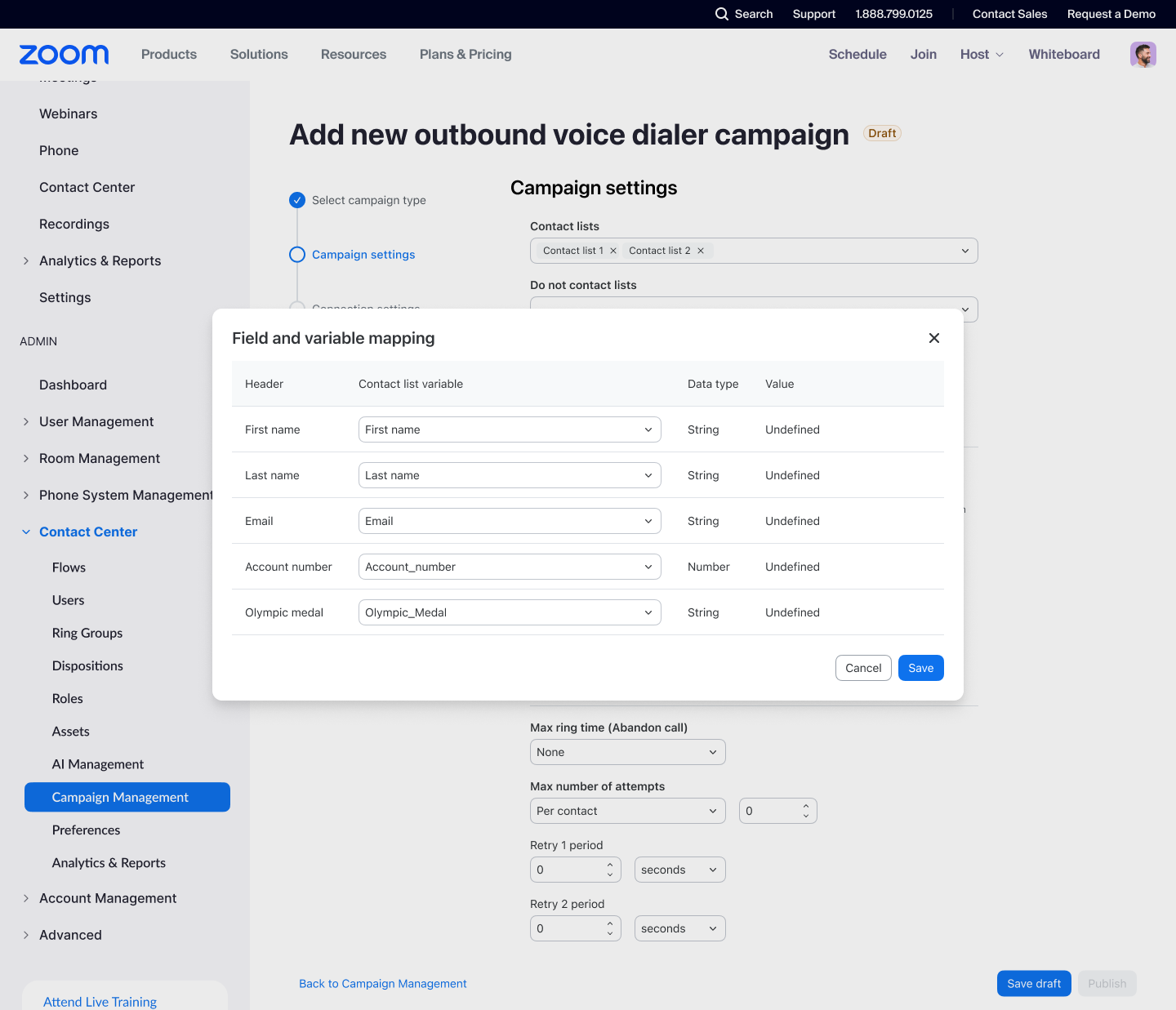Zoom Contact Center
Introduced lean development and improved velocity of an enterprise product
As a senior designer, it has been critical to leverage my business and research background to improve the way the Zoom Contact Center team updates and prioritizes their product roadmap. Through liaising with our sales counterparts and coaching product managers and engineers on lean development, product triads are able to work more efficiently and deliver more value.

The following screens are for the Agentless Outbound dialer function. It is a table stakes feature for contact centers that sat in our product backlog for two years before I joined the team.



Zoom Contact Center is a new entrant into an industry with few but established competitors. Because of this, it faces a problem that many new entrants face: feature parity vs. user-focused innovation. The financial pressure of feature parity often causes product teams into abandoning roadmaps and reduces opportunities for differentiation.
Because feature parity is often a matter of checking boxes, product teams are incentivized to go after low-hanging fruit: easy to deliver, but value deficient. At Zoom, we often ended up not achieving either because of this. Both fundamental features and innovation ended up on the cutting floor during planning because they were deemed "too big".
For example, outbound dialing is considered a tables stakes feature in the contact center industry and we were losing deals quarter after quarter by delaying it due to its "size". This misalignment exacerbated the relationship between Sales and Product and, more importantly, negatively impacted the revenue goals that both teams shared.
After establishing trust with my teammates, I created a short and long-term concept for the feature to showcase to product and sales leadership. I then worked with sales and engineers to break up the feature into smaller, but feasible and usable functions. With the feature broken up into multiple parts and phases, it could no longer be "too big". By breaking the feature into smaller but feasible actions, the feature became less daunting to our product manager and engineers and we were able to focus on delivering incremental customer value.
While I was familiar with this type of lean development at previous organizations, this was the first time I had to retrain product teams on the methodology. As a result though, we were able to start development that had been stuck on the roadmap for two years with a plan to complete it in just two quarters.